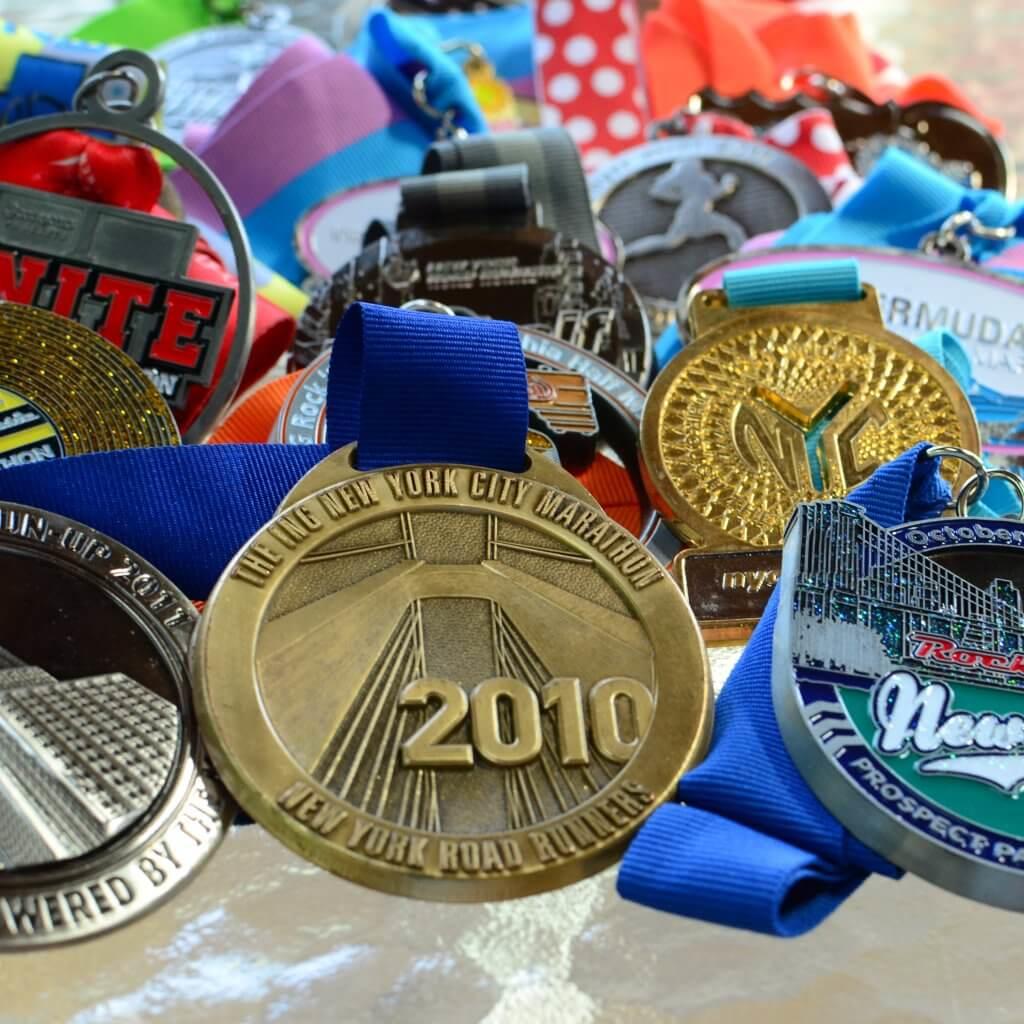Beginner’s Guide to Running Terminology: Part 2

Be sure to check out Part 1 to get all caught up!
Running Training Plan
Training Plan: A plan that a coach (or a friend or the internet or you) has outlined to help you get into shape for a goal race and/or to accomplish a race in a specific time.
Pace: This is how fast you are running. Most runners gauge their pace per mile, so when you hear “I ran the entire marathon at an 8 minute pace.”
Striders: A type of running exercise performed before or after a run as a warm up or cool down. Striders involve slowly increasing speed as you lengthen your leg stride. Typically performed the length or half-length of a football field.

Tempo: Tempo runs are designed to increase your race time; they are runs performed at a “comfortably hard” pace, so that your heart rate is escalated (but not a full out sprint that you can’t maintain that pace for several miles). Your heart rate should be about 80 percent of your maximum heart rate, and you should be tired at the end (but not completely dead).
LSD: Stands for “long, slow (or steady) distance”. These runs are used to increase your mileage and get you used to the mental game of running longer distances. They are most runners’ only way to kick off a Saturday morning because getting lost in their thoughts for 10+ miles is the best way to get the weekend started.
Recovery Run: Slow runs of shorter distances that are ran in the day(s) after a hard workout or race to get your legs moving and “shake out” any lactic acid that is lingering.
Speed work: Fast, hard runs. Sometimes done on a track, but can be completed on any terrain. Speed work is typically shorter distances, faster times, and gets the heart rate up high.

Fartlek: Swedish for “speed play.” Fartleks involve adding short periods of increased speed work throughout a run.
Hill Repeats: Running up a hill as fast and hard as you can and then jogging down. Repeat for a set number of times.
Double Back vs. Loop: Double-back means that you will run to a point x-number of miles away, then run back along the same route to your starting spot. LA Loop is running in a route that starts and finishes in the same spot but you do run on the same path twice, as you do with a double back.
Taper: The period during the training plan when runners start to go crazy. Tapers are the last one or two weeks of a training plan when you cut back your weekly mileage and efforts in order to be rested for race day.
Junk Miles: Miles ran for the sole purpose of hitting a particular number of weekly miles.
Race Day
Chip Time: Your “official” finish time according to the race clock. Some races supply runners with an actual “chip” to wear during the race, which accurately times your run from the moment you cross the start line to the moment you cross the finish line.
Corral: At the start line of many races, runners are grouped with other runners running at a similar pace. Corrals have a staggered start time so that slower runners don’t get trampled over by faster runners. It is especially necessary when organizing runners in major races such as the Chicago, New York, and Boston Marathon.
Rabbits: A runner in each corral that help the other runners pace themselves. These runners are appropriately named for their ability to just keep going and going and going….

Bib: The nifty piece of paper you pin to your shirt that notes your race number.
Splits: How fast you ran a certain distance. Most runners choose to split their races in half, and focus on how their times compare during the first half of the race to the second half. Negative splits mean you ran the second half of the race faster than the first, positive splits mean you ran the second half of the race slower than the first, and even splits mean you ran both the first and second halves in equal time.
DNS/DNF: “Did Not Start” or “Did Not Finish”. These two terms will show up next to your name in the race results if for some reason you never made it to the starting line or had to drop out before you reached the finish.
5K/10K/Half Marathon/Marathon: Popular race distances. 5k’s are 5000 km or 3.1 miles. 10k’s are 1000 km or 6.2 miles. Half Marathons are 13.1 miles long and marathons are 26.2 miles long.

Hardware: The medals and trophies you get to show off with pride after completing a race.
BQ: “Boston Qualifier”. In order to qualify for entry into the Boston Marathon, runners must first run a select marathon (a Boston Qualifier) in a certain time that is determined according to their age and gender.
Miscellaneous Running Words
Dreadmill: What many runners refer to the treadmill as. Unfavorable conditions outside or scheduling might force you indoors to do your run on a treadmill.
Cross-train: A fancy way of saying you did something else other than running. Most runners don’t often cross-train by choice. However, it is strongly suggested that runners cross-train in order to avoid injury, burnout, as well as benefit their running performance. Some common cross-training exercises for runners include strength training, cycling and swimming.
Runner’s High: Exercise-induced endorphins are a REAL THING. Even if you don’t experience a true “runner’s high”, you will start to notice after you’ve been running awhile that you will crave a run because of the “feel-good” hormones that are released during a run.
Latest Articles
 Is Running on a Treadmill Easier Than Running Outside?Runners have their own preferences, whether it is treadmill running, running outside on the road, or exploring trails. So...
Is Running on a Treadmill Easier Than Running Outside?Runners have their own preferences, whether it is treadmill running, running outside on the road, or exploring trails. So... Is It OK to Use Trail Running Shoes on the Road?While trail running shoes can be used on roads, especially in situations where a runner encounters mixed terrains or pref...
Is It OK to Use Trail Running Shoes on the Road?While trail running shoes can be used on roads, especially in situations where a runner encounters mixed terrains or pref... How to Fix Sore Quads After Running?Rest, ice, gentle stretching, and over-the-counter pain relievers can help soothe sore quads after running. Also, ensure ...
How to Fix Sore Quads After Running?Rest, ice, gentle stretching, and over-the-counter pain relievers can help soothe sore quads after running. Also, ensure ... 10 Fruits With The Most Electrolytes to Replace Sports DrinksThese fruits are high in electrolytes such as potassium, magnesium, and calcium, essential for hydration, muscle function...
10 Fruits With The Most Electrolytes to Replace Sports DrinksThese fruits are high in electrolytes such as potassium, magnesium, and calcium, essential for hydration, muscle function...

